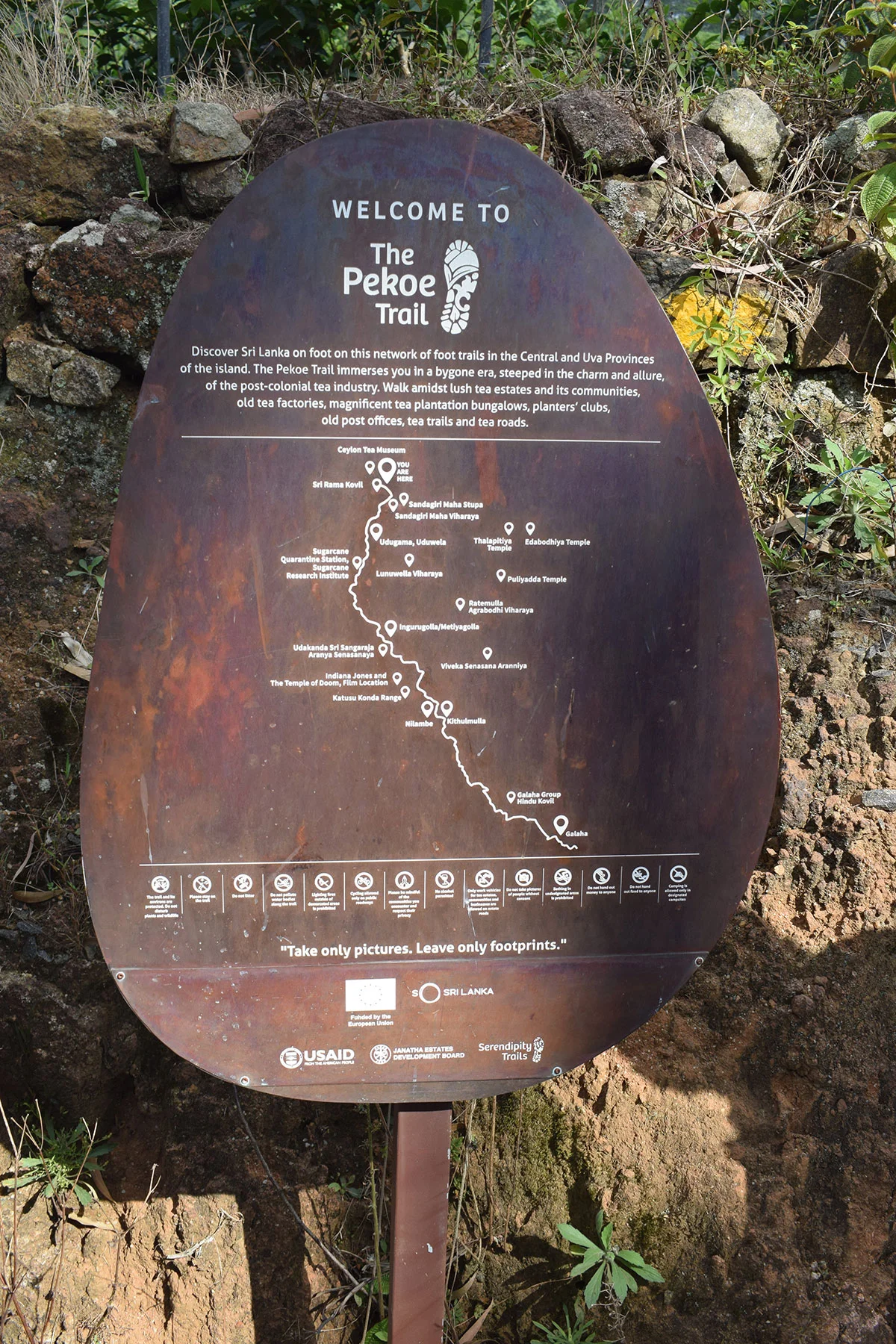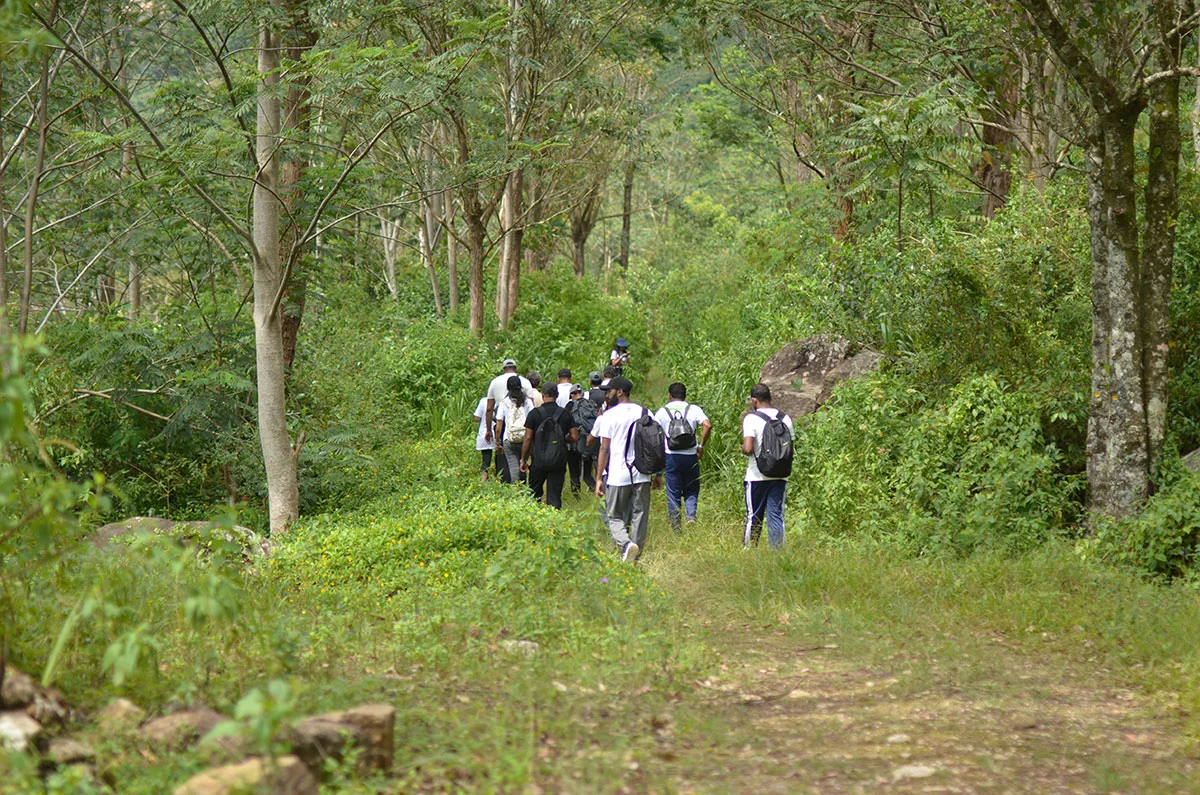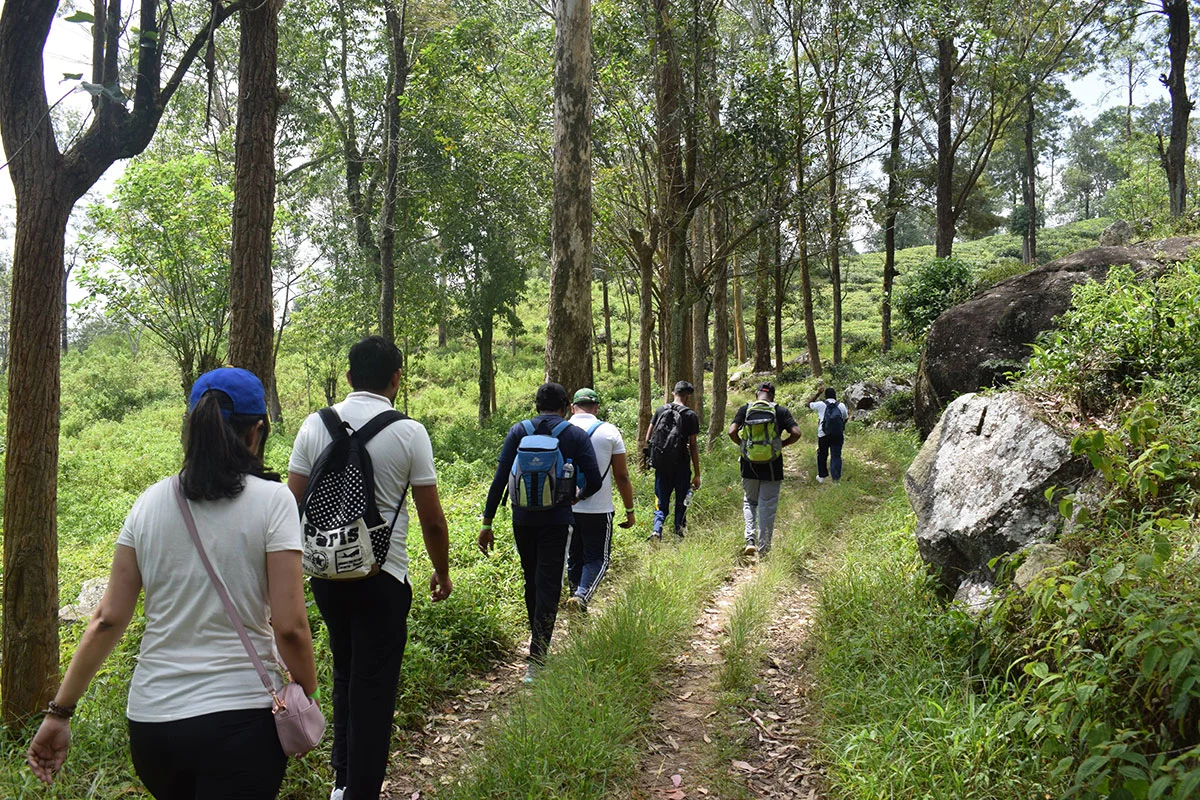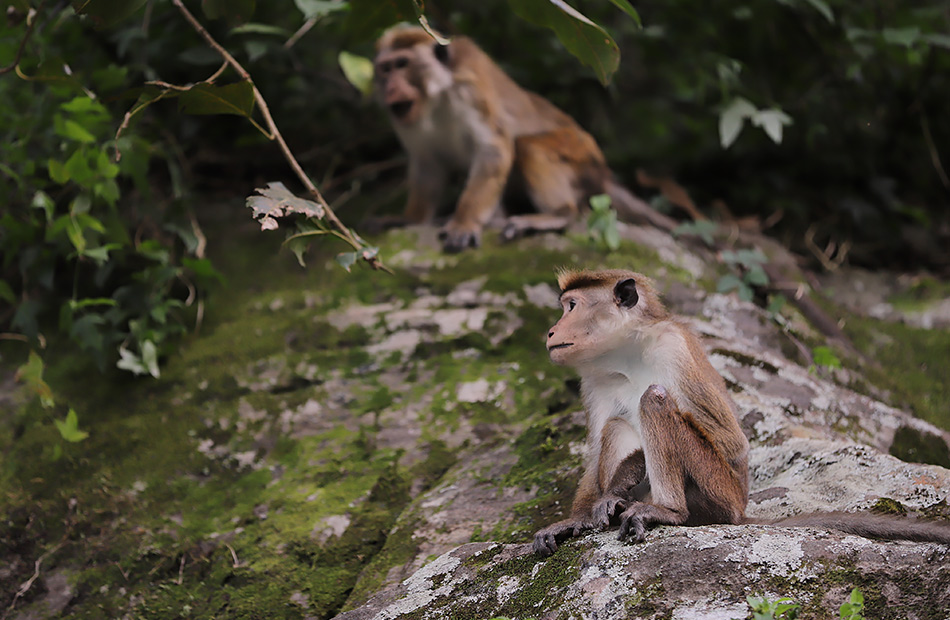The Pekoe Trail: Sri Lanka’s Ultimate Hiking Experience
Renowned for its breathtaking beaches, historic ruins, and rich culture, Sri Lanka is known as the “Pearl of the Indian Ocean.” But beyond the well-traveled tourist trails is a secret treasure for daring hikers: The Pekoe Trail. This fantastic system of paths meanders throughout the heart of Sri Lanka’s magnificent central highlands, providing an unmatched chance to appreciate the island’s natural beauty and rich tea culture.
The Pekoe Trail is a voyage rather than simply another climb. This is an opportunity to see the kind hospitality of the Sri Lankan people, tour lush tea farms across the undulating hills, and find secret waterfalls down precipitous cliffs. For those who choose to hike the Pekoe Trail in Sri Lanka, it offers a different combination of physical difficulty, breathtaking scenery, and authentic cultural encounters than many other hiking sites. In Sri Lanka and Asia, it is fast becoming known as one of the most incredible trekking experiences. The Pekoe Trail distinguishes itself with well-maintained trails (in most portions), fantastic wildlife, and the opportunity to connect with the people who have moulded this terrain for decades.
What is the Pekoe Trail?
Comprising more than 300 kilometers (about 186 miles), the Pekoe Trail is a painstakingly designed long-distance trekking path throughout the central highlands of Sri Lanka. It’s a network of linked paths rather than a single, straight road, many of which tea estate employees have been using for decades. The name ” Pekoe” honours the area’s primary industry and the path’s historical roots by referencing a premium grade of black tea.
The path serves primarily to link many of the hill area’s important cities and districts, such as Kandy, Hatton, Nuwara Eliya, Haputale, and Ella. Thanks to this deliberate layout, hikers may enjoy the many settings and cultures that define this area. The initiative was meant to increase sustainable tourism, give local businesses financial possibilities, and highlight the local natural and cultural legacy.
The Pekoe Trail offers a different overall experience. Though it’s also feasible to trek specific sections for shorter excursions, it’s meant to be a multi-day hiking journey, and hikers usually take several weeks to finish the whole path. The difficulty varies from simple treks on well-maintained estate trails to demanding climbs up steep mountain peaks. The settings are equally varied, comprising prosperous tea farms, deep forests, foggy mountains, and gorgeous waterfalls. This continual change of environment makes the climb interesting for every kind of hiker. The trek is in the central highlands, renowned for its milder temperature, breathtaking scenery, and tea.

Planning Your Pekoe Trail Adventure
Starting the Pekoe Trail calls for meticulous preparation to guarantee an interesting and safe trip. The major factors are broken out here:
Ideal Visit Time:
One should trek the Pekoe Trail during the two primary dry seasons. From December to March is the first, and maybe most often used one. These months should provide perfect trekking conditions with clear sky, less humidity, and little rainfall. Though it might occasionally be much windier, the second dry season, which spans from June to September, provides still another window of good weather. Avoiding the monsoon seasons which usually run from May to June (the southwest monsoon) and October to November the northeast monsoon is ideal. These times bring lots of rain, which muddy, slippery, and maybe dangerous trails become from, and it increases leech prevalence.

Getting There: Bandaranaike International Airport (CMB) near Colombo is Sri Lanka’s principal foreign airport. From Colombo, the Pekoe Trail’s beginning places are reachable by many forms of transportation:
- rail: One highlight in itself is the picturesque rail trip from Colombo to Kandy, Hatton, or Ella. Many people find this to be the most fun and beautiful approach of getting to the mountains.
- Bus: Colombo is connected to several locations along the route by local and air-conditioned express buses. Though they are less expensive, buses could be slower and less pleasant than the train.
- Private Taxi/Van: Particularly if you are travelling with a party or have a lot of bags, hiring a private taxi or van is the most costly but also the most handy choice.
Kandy is a significant cultural center and typical beginning place for the Pekoe Trail, therefore the main access cities and towns for it.
- Hatton: Access to several stages from the center of tea land.
- Popular base for exploring the nearby highlands, Nuwara Eliya is sometimes referred to as “Little England.”
- Ella: Often chosen as an endpoint or mid-point, this little town boasts breathtaking vistas.
Policies and Permission:
There are no particular permissions needed right now to climb the Pekoe Trail itself. You will have to pay extra entrance tickets, though, if you intend to visit any national parks or protected areas along the way—like Horton Plains National Park. To get the most recent rules and any revisions before your trip, please ask the Sri Lanka Tourism Board or local authorities. Generally speaking, hikers are supposed to obey Leave No Trace guidelines, therefore honoring the surroundings and nearby towns.
Options for Accommodation:
The Pekoe Trail has a broad spectrum of lodging choices to fit varying tastes and budgets:
- Tea Estate Bungalows: A colonial-era tea estate home will provide a really authentic experience. These provide a unique window into the past of the area and frequently have great vistas and cuisine.
- Guesthouses: Along the path, the towns and villages have several guesthouses offering reasonably priced, pleasant accommodation.
- Hotels: From low-cost to luxury choices, bigger towns such Kandy, Nuwara Eliya, and Ella have a range of hotels.
- Homestays: Think about lodging with a nearby family in a homestay for a more real cultural encounter.
Popular lodging options include Jetwing St. Andrew’s (Nuwara Eliya), The Secret Ella (Ella), and several guesthouses in Hatton and Haputale; this will require updated as new ones open. Booking lodging in advance is advised, particularly during busy seasons.
Packing Essentials:
Packing appropriately is crucial for a comfortable and safe hike on the Pekoe Trail. Here’s a comprehensive packing list:

Suggested Packing List for Pekoe Trail in Sri Lanka:
-
- Clothing:
- Lightweight, quick-drying hiking pants and shirts (long sleeves are recommended for sun and insect protection)
- Fleece jacket or sweater for cooler evenings
- Waterproof and windproof jacket and pants
- Hiking socks (several pairs)
- Comfortable underwear
- Hat and sunglasses
- Sleepwear
- Gear:
- Sturdy hiking boots (well broken-in)
- Backpack (appropriate size for your trip length)
- Daypack (for shorter hikes and excursions)
- Water bottles or hydration reservoir (at least 2 liters capacity)
- Headlamp or flashlight (with extra batteries)
- Trekking poles (optional, but helpful for steep sections)
- First-aid kit (including blister treatment, pain relievers, antiseptic wipes, and any personal medications)
- Insect repellent (containing DEET or Picaridin)
- Sunscreen (high SPF)
- Map and compass/GPS device (or a smartphone with a reliable offline map app)
- Camera and extra batteries/memory cards
- Power bank for charging electronic devices
- Quick-drying towel
- Toiletries (biodegradable soap and shampoo recommended)
- Toilet paper
- Hand sanitizer
- Small, lightweight lock for securing your backpack
- Optional Items:
- Binoculars (for birdwatching)
- Book or e-reader
- Journal and pen
- Snacks (energy bars, nuts, dried fruit)
- Swimsuit (if you plan to visit any waterfalls or swimming spots)
- Sandals or flip-flops (for relaxing in the evenings)
- Clothing:
The most important items are sturdy, well-broken-in hiking boots and rain gear. The weather in the highlands can be unpredictable, and you should be prepared for both sunshine and rain.
Stages of the Pekoe Trail
Overview of Stages:
There are many phases on the Pekoe Trail, which lets hikers alter their path depending on their time limits and degree of fitness. Although the precise count of stages will depend on its definition, the route is usually regarded to contain 22–24 separate stages. Usually spanning shorter, simpler treks to more difficult hills, each stage reflects a day’s worth of trekking. This planned method is beautiful in that you may choose to complete a specific portion in a few days, cover the whole path over several weeks, or even simply visit one stage for a day trek.
Stage-by-Stage Analysis (With Sample Stages)
This is a sample breakdown, hence the precise characteristics of every stage—distances, difficulty, etc.—may change somewhat depending on the source and any recent trail updates. Before starting any particular step, always refer to current resources. To help you understand the organization of the route, I will offer illustrations of a few important points:
- Stage 1: Kandy to Galaha
- Distance: Approximately 15-20 km (9-12 miles)
- Difficulty: Moderate
- Highlights: This stage often begins in the historic city of Kandy, a UNESCO World Heritage Site. The trail winds its way through lush green hills, passing through tea plantations and small villages. You’ll get a good introduction to the cultural landscape of the region.
- Accommodation: Guesthouses and homestays are available in Galaha.
- Stage 2: Galaha to Hatton
- Distance: Approximately 20-25 km (12-15 miles)
- Difficulty: Moderate to Challenging
- Highlights: This stage takes you deeper into tea country, with stunning views of the surrounding hills and valleys. You’ll likely pass by working tea factories and have opportunities to interact with tea pluckers.
- Accommodation: Hatton offers a wider range of accommodation options, including guesthouses, hotels, and tea estate bungalows.
- Stage 3: Hatton to Nuwara Eliya
- Distance: Approximately 25km
- Difficulty: Moderate
- Highlights: Begin in the bustling town of Hatton, a major center for the tea industry.Ascend through tea plantations, offering panoramic views of the surrounding hills. Pass through smaller villages, interacting with locals and experiencing daily life.
- Accommodation: Nanu Oya
- Stage : Nuwara Eliya to Haputale
- Distance: Approximately 25-30 km (15-18 miles)
- Difficulty: Challenging
- Highlights: This stage often involves higher altitudes and potentially more challenging terrain. You might pass through cloud forests and experience cooler temperatures. The scenery is incredibly dramatic, with panoramic views from mountain ridges.
- Accommodation: Haputale offers a range of guesthouses and hotels, many with spectacular views.
- Stage : Haputale to Ella
- Distance: Approximately 20-25 km (12-15 miles)
- Difficulty: Moderate
- Highlights: This is often considered one of the most scenic sections of the trail, passing by iconic landmarks like Lipton’s Seat and offering breathtaking views of Ella Gap.
- Accommodation: Ella is a popular tourist town with a wide variety of accommodation options, from budget guesthouses to boutique hotels.
What to Expect on Pekoe Trail
Along with the opportunity to taste real Ceylon tea, the Pekoe Trail presents a full and varied experience with breathtaking landscape, unusual fauna, interesting cultural interactions, and, of course, Here’s a deeper look at what to expect:

Landscape and Scene Views:
Along the Pekoe Trail, the settings are absolutely different and amazing. Of course, the dominating aspect is the almost limitless expanse of tea estates. Covering vivid green tea plants, these painstakingly maintained hill sides produce a very remarkable view. Still, the view is not monotonous. You’ll also come across:
- Towering Mountains: The path passes across the central highlands providing expansive vistas of deep valleys and rocky mountains.
- Lush woods: Parts of the path go through thick woods, offering cover and an opportunity to see Sri Lanka’s great diversity.
- Cascading Waterfalls: Along the path, several waterfalls provide amazing picture chances and cool respite.
- Rolling Hills: With fresh views opening up at every turn, the undulating topography fosters a continual sense of discovery.
World’s end, Lipton’s Seat, and Ella Rock provide breathtaking views; picturesque valleys abound.
Among the particular scenic highlights might be Lipton’s Seat, a lookout with panoramic views; Ella Rock, a difficult but worthwhile climb; and several waterfalls including St. Clair’s Falls and Devon Falls.
Wildlife and Nature:
Though sightings are never assured, the Pekoe Trail presents chances to come across a range of Sri Lankan species. Birds: Sri Lanka is a birdwatcher’s dream come true; the highlands support a great variety of native birds, including several indigenous species.
- Monkeys: Common in the area, several types of monkeys can be observed grazing close to the route or swinging across the trees.
- Sambar Deer: Sometimes seen grazing on the meadows or close to woodland boundaries are these big deer.
Although somewhat rare, leopards do live on the mountains. Though exceedingly improbable, sightings are evidence of the wildness of the area.
Butterflies: lizards
Along with a varied spectrum of vegetation, the walk has wildflowers, ferns, orchids, and several kinds of trees. The natural surroundings include the tea farms itself, and you will learn about the several kinds of tea plants and the farming techniques.
Cultural Interactions
The chance to engage with the local communities on the Pekoe Trail is among its most fulfilling features. The path winds past several towns and tea fields, offering a window into the daily life of the people who call this area home.
- Tea Estate Workers: Mostly women, you may probably run across tea pluckers deftly gathering tea leaves. Though it’s crucial to be polite and get permission before snapping pictures, they are frequently eager to speak and share their stories.
- Villages: The path winds through little communities where you could visit local businesses, see traditional Sri Lankan life, and maybe even sample some home-cooked cuisine.
- Along the route, you will come across several temples and religious places reflecting the several religious traditions of Sri Lanka (Buddhism, Hinduism, Christianity, and Islam).
- Regional hospitality.
These contacts provide the trekking experience more depth and a great cultural engagement.
Tips for a Successful Pekoe Trail Hike
Use these basic guidelines to maximize your Pekoe Trail experience:
Exercise and Get ready
Although the Pekoe Trail has stages suited for different degrees of fitness, a decent amount of physical ability is advised particularly if you intend to tackle longer or more difficult portions. Prior to your vacation, consistently participate in cardiovascular exercise including:
- Hiking is, naturally, the ideal way to be ready for a long-distance hike! Start with easier walks and progressively raise the elevation gain and distance covered.
- Walking: Should hiking not be easily available, fast walking—especially uphill—is a suitable substitute.
- Running can increase cardiovascular endurance and fitness.
- Cycling: Another great approach to raise your hiking-related fitness level is cycling.
Particularly for your legs and core, strength training helps also.
Safety Notes for Pekoe trail:
Safety should always come first. Here are some salient features to bear in mind:
- Hydration: Particularly in the warmer, more humid parts of the day, sip lots of water. At least two liters of water should be carried, and refilled anywhere you can.
- Sun Protection: Higher elevations expose one to strong sun. Don sunglasses, a hat, and high SPF sunscreen.
- Navigating: Although in many places the trail is usually well-marked, you still need a consistent way of navigating. This might call for a GPS device, a map and compass, or a smartphone with an offline map app—like Maps.me or AllTrails.
- Weather: Get ready for shifting temperatures. Pack pants and a waterproof jacket among other layers of apparel.
- Leeches: Particularly during the wet season, leeches are very numerous in some places. Wear long socks; also, think about wearing leech socks or insecticide. Look for leeches often on your body.
- Wildlife Encounters: Although most species are benign, remain alert of your surrounds and keep a safe distance from animals.
- Tell someone your hiking intentions, including your path and anticipated return time.
- Carry a properly stocked first-aid kit and know how to use it.
Responsible Travel:
The Pekoe Trail crosses active communities and vulnerable ecosystems. Leave no trace by packing whatever you bring—including food waste and trash—in appropriate manner. Keep on designated paths to minimize disturbance of the plants.
- Honor Local Culture: Visit religious places and communities dressed modestly. Before snapping pictures of individuals, get permission.
- Supporting Local Communities: whenever at all feasible buy goods and services from nearby companies. Think about staffing native porters or guides.
- Reducing Your Impact: Steer clear of one-time use plastics. Get reusable bags and refillable water bottles.
Hiring a Guide vs. Independent Hiking:
Deciding whether to hire a guide depends on your experience, comfort level, and preferences:
- Pros of Hiring a Guide:
- Navigation: Guides can ensure you stay on the correct path, especially in less well-marked areas.
- Cultural Insights: Guides can provide valuable information about the local culture, history, and environment.
- Logistical Support: Guides can assist with arranging accommodations, transportation, and meals.
- Safety: Guides are familiar with the terrain and potential hazards.
- Language Assistance: Guides can help with communication if you don’t speak Sinhala or Tamil.
- Cons of Hiring a Guide:
- Cost: Hiring a guide adds to the overall expense of the trip.
- Less Independence: You’ll have less flexibility to set your own pace and explore independently.
- Independent Hiking:
- Is possible on many sections of the trail, particularly the well-marked and popular stages.
- Requires careful planning, good navigation skills, and a higher level of self-sufficiency.
If you’re an experienced hiker comfortable with navigation and self-reliance, independent hiking is certainly feasible. However, for less experienced hikers or those seeking a deeper cultural understanding, hiring a guide is highly recommended.
Navigation on the Pekoe Trail:
With signs and markings in many places, the Pekoe Trail is growingly well-marked. Still, it’s vital to have accurate navigation instruments:
- Maps: Get a thorough trail map—a real or a digital map available on a smartphone app.
- GPS gadget: Particularly in places with inconsistent cell phone service, a specialized GPS gadget can be quite useful.
- Smartphone Apps: Offline maps and GPS tracking abound from Maps.me, AllTrails, and Wikiloc. Get the essential maps before your climb begins.
- Local Advice: Don’t hesitate to get instructions from residents. They are a great source of knowledge most of the time.
Frequently Asked Questions (FAQs) about The Pekoe Trail
People often have the following typical inquiries regarding the Pekoe Trail:
- How much does the Pekoe Trail walk cost?
Your travel method, lodging selection, and whether you pay a guide will all considerably affect the cost of hiking the Pekoe Trail. Spending as little as $20–30 USD day (including basic lodging, food, and transportation), a budget-conscious solo hiker may save While those living in luxury tea estate bungalows and hiring guide might spend far more, mid-range visitors might pay $50 to $100 USD day.
- How challenging is the Pekoe Trail?
From simple treks on well-maintaining trails to strenuous climbs up steep mountain slopes, the Pekoe Trail presents a spectrum of difficulty levels. The particular stages you decide to hike determines the general challenge. Many parts are moderate, suited for hikers with a decent degree of fitness.
- Should one go alone on the Pekoe Trail?
Generally speaking, Sri Lanka is a safe place for single visitors including hikers. Still, it’s always smart to exercise care. Tell someone your itinerary; be mindful of your surroundings; and think about paying a guide for more isolated areas. Traveling alone women should use the same caution they would in any other nation.
- On the Pekoe Trail, what choices exist for luggage transportation?
There are several ways to get bags from one stage to another:
- Porters: To carry your bags, you could contract nearby porters. This is a regular habit that boosts the nearby business.
- Tuk-tuks/Taxis: In certain places you may set up tuk-tuks or taxis to carry your baggage between towns.
- Guesthouses/Hotels: For its visitors, some may provide luggage transfer facilities.
- Your tour guide: Should you have a tour guide scheduled, they will handle everything.
On the route, how readily available are food and water?
Along the Pekoe Trail, the towns and villages have typically easy access to food and water. Local businesses including stores, eateries, and tea shops abound with meals, snacks, and beverages. Still, it’s always smart to pack enough water, particularly on longer walking days. Should you be unsure about the water quality, think about bringing purification pills or a water filter.
- How should I handle leeches on the Pekoe Trail?
In some places, especially during the wet season, leeches are very prevalent. Here’s how you handle them:
- Put your jeans tuck into your long socks.
- Think about wearing leech socks—specifically made socks meant to stop leeches from getting to your skin.
- Cover your socks and shoes with insect repellant such DEET or Picaridin.
- Look for leeches routinely on your body.
- Should you discover a leech, don’t start to freak. Pull it with a credit card, a fingernail, or a leech removal tool.
- Give the bite antiseptic treatment to stop infection.
- Does anyone along the Pekoe Trail have internet access?
Online access changes along the path. Usually, bigger cities and tourist destinations have decent Wi-Fi access in guesthouses and hotels together with mobile phone service. Internet connectivity may be restricted or nonexistent in more rural regions, though. If you want consistent internet connectivity, think about getting a local SIM card with a data package.
- Is the Pekoe Trail suitable for beginners?
- Yes, there are sections suitable for beginners.
- Can the Pekoe Trail be done in reverse?
- Yes.
Conclusion
Immersing you in the stunning scenery and rich culture of Sri Lanka’s central highlands, the Pekoe Trail provides a very special and unforgettable trekking experience. It’s a trip via lush tea estates, foggy mountains, and energetic towns, not only a hike. The Pekoe Trail has plenty to offer everyone, from expert hikers seeking a new challenge to nature lovers searching for an immersive trip.
For those looking for a closer relationship with Sri Lanka, the trail’s well thought out phases, varied scenery, and chances for cultural contact set it apart. This is an opportunity to explore the hidden treasures of this amazing island off the usual tourist path. Physical exercise, breathtaking surroundings, and kind hospitality from the Sri Lankan people come together to produce a really transforming experience that will last long after you get home. So be ready to be enthralled by the enchantment of the Pekoe Trail in Sri Lanka by lacing up your boots, packing your baggage, This trip will test you, motivate you, and leave you deeply respecting the beauty and culture of this amazing island nation.
Keywords and meta data:
Pekoe trail sri lanka map, Pekoe trail sri lanka distance, Pekoe trail sri lanka pdf, Pekoe Trail Stage 1, Pekoe Trail Kandy, Pekoe Trail stages, Pekoe trail stage 3, Pekoe trail sri lanka location, Pekoe trail Sri Lanka, Pekoe trail stage 1, Pekoe trail stage 2 – Galaha to Loolecondera, Pekoe trail map, Pekoe trail stages, Pekoe trail stage 22, Pekoe trail stage 3, Pekoe trail stage 16, Pekoe trail stage 13 – Haputale to St. Catherine’s hill, Pekoe trail stage 7 – Kotagala to Norwood

“Hi I’m Alicia, I represent Vogue Lanka Travels as a Travel Consultant. We are online 24/7 365
days. You can contact me by clicking on “chat with me now” button below.
-
[email protected] -
+94 71 29 700 51


